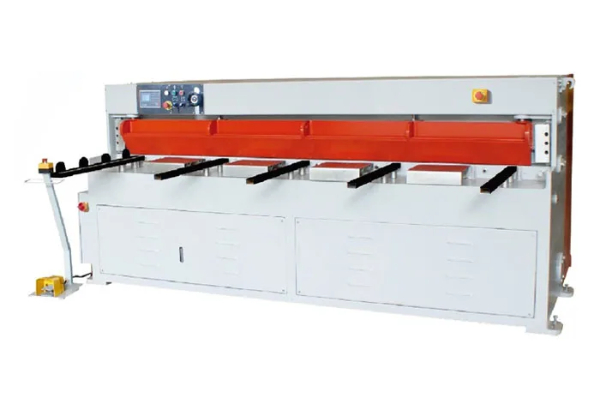
Application of Automatic Control System in Air Duct Production Line
- By:Metmac
- 2024-10-23
- 772
Air ducts are an essential component of heating, ventilation, and air conditioning (HVAC) systems in buildings. They are responsible for distributing conditioned air throughout the building. Traditionally, air ducts have been manufactured using manual processes, which are labor-intensive, time-consuming, and error-prone. However, with the advent of automatic control systems, the manufacturing process of air ducts can be greatly improved in terms of efficiency, accuracy, and quality.
Advantages of Using Automatic Control Systems
Automatic control systems offer a number of advantages over manual processes for air duct production. These advantages include:
Increased efficiency: Automatic control systems can operate at much higher speeds than manual processes, which can lead to significant time savings.
Improved accuracy: Automatic control systems can be programmed to follow precise instructions, which can help to eliminate errors and ensure that air ducts are manufactured to the correct specifications.
Enhanced quality: Automatic control systems can help to improve the quality of air ducts by eliminating variations in the manufacturing process. This can lead to longer-lasting air ducts that are less likely to leak or fail.
Reduced labor costs: Automatic control systems can reduce the amount of labor required to manufacture air ducts, which can lead to significant cost savings.
Components of an Automatic Control System
An automatic control system for air duct production typically consists of the following components:
Computer: The computer is the brain of the system and is responsible for controlling the other components.
Controller: The controller is responsible for translating the computer’s instructions into signals that can be understood by the other components.
Actuators: The actuators are responsible for carrying out the computer’s instructions. They can be used to move the cutting heads, bending machines, and other equipment used in the air duct production process.
Sensors: The sensors are responsible for monitoring the progress of the air duct production process. They can be used to detect the position of the cutting heads, bending machines, and other equipment.
How Automatic Control Systems Are Used in Air Duct Production
Automatic control systems are used in a variety of ways in air duct production. Some of the most common applications include:
Cutting: Automatic control systems can be used to control the cutting of the sheet metal used to make air ducts. This canช่วย to ensure that the cuts are made accurately and consistently.
Bending: Automatic control systems can be used to control the bending of the sheet metal used to make air ducts. This can help to ensure that the bends are made accurately and consistently.
Assembly: Automatic control systems can be used to control the assembly of the air ducts. This can help to ensure that the air ducts are assembled correctly and securely.
Benefits of Using Automatic Control Systems in Air Duct Production
The use of automatic control systems in air duct production can provide a number of benefits, including:
Increased productivity: Automatic control systems can help to increase productivity by automating many of the tasks that are traditionally performed manually. This can lead to significant time savings and lower production costs.
Improved quality: Automatic control systems can help to improve the quality of air ducts by eliminating variations in the manufacturing process. This can lead to longer-lasting air ducts that are less likely to leak or fail.
Reduced labor costs: Automatic control systems can help to reduce labor costs by eliminating the need for manual labor in many of the tasks involved in air duct production. This can lead to significant cost savings.
Automatic control systems offer a number of advantages over manual processes for air duct production. These advantages include increased efficiency, improved accuracy, enhanced quality, and reduced labor costs. As a result, the use of automatic control systems in air duct production is becoming increasingly common.
-
Advanced Sheet Metal Rolling, Cutting, and Folding Machines for Efficient Fabrication
2025/10/22 -
High-Precision Sheet Metal Bending and Cutting Solutions for Modern Manufacturing
2025/10/22 -
High-Precision Solutions from Leading Sheet Metal Cutting Machine Manufacturers
2025/09/11 -
Reliable Sheet Metal Equipment for Sale to Support Precision Fabrication
2025/07/17
-
Advanced Sheet Metal Rolling, Laser Cutting, and Folding Machines for Precision Fabrication
2025/10/31 -
High-Performance Sheet Metal Bending and Cutting Machines for Modern Fabrication
2025/10/31 -
High-Quality Sheet Metal Equipment for Sale: Efficient Solutions for Modern Manufacturing
2025/10/31 -
High-Performance Sheet Metal Equipment for Sale: Forming and Shearing Solutions for Modern Fabrication
2025/10/22
-
A Guide to the Latest Innovations in Sheet Metal Folding Machines
2024/11/29 -
Key Features to Consider When Investing in a Sheet Metal Folding Machine
2024/11/28 -
Enhancing Precision with Advanced Sheet Metal Folding Machines
2024/11/27 -
How to Choose the Right Sheet Metal Folding Machine for Your Workshop
2024/11/26






